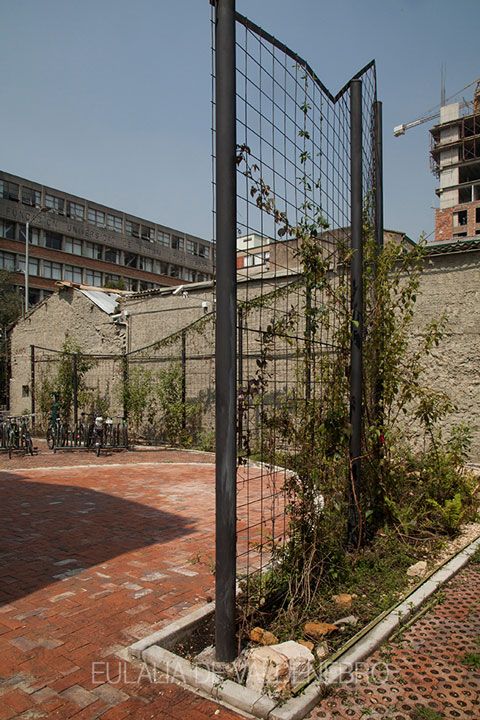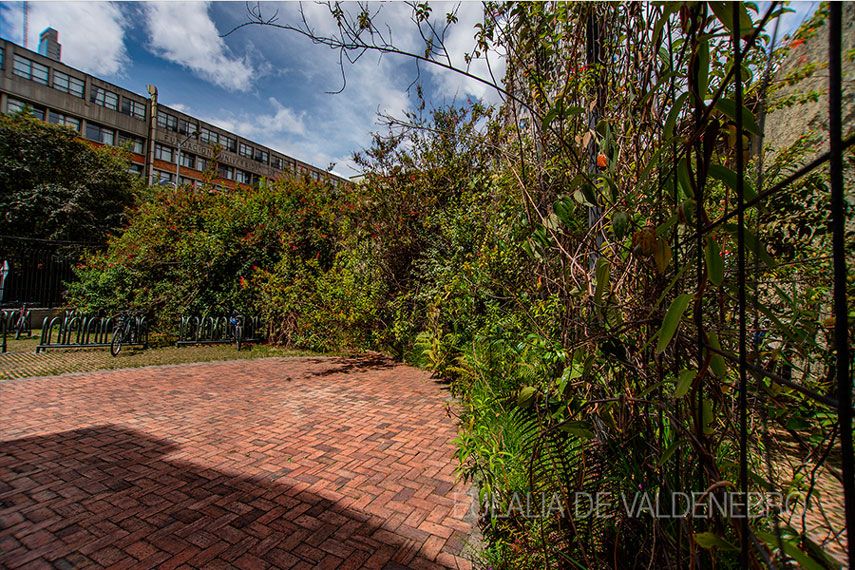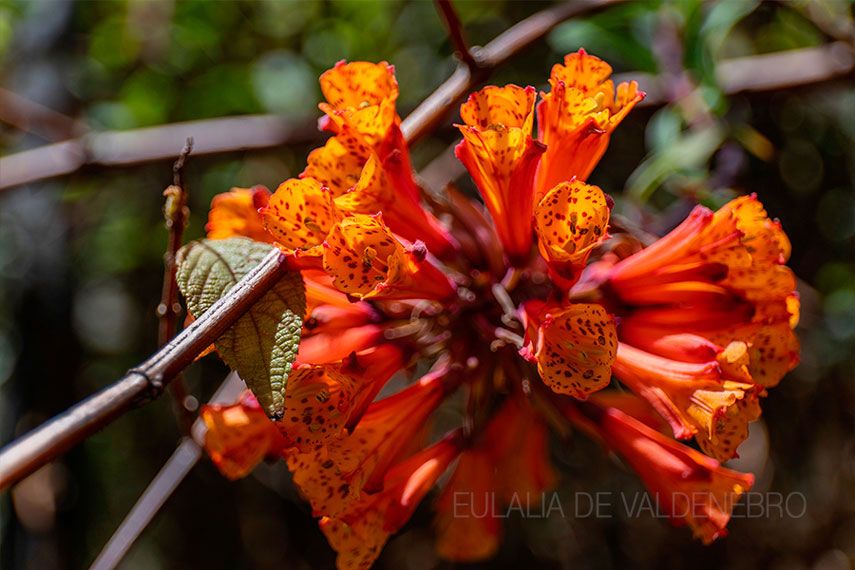Foráneas/Nativas (Foreigners/Natives) is a sculptural project developed by the artist Eulalia de Valdenebro in Bogotá, Colombia. It is a work that reflects upon the current situation of the Andean forest ecosystem in Bogotá's eastern hills: a paradox that makes visible the foreign condition that the native species of this territory have adopted today due to their displacement since the period of the conquest. Thus, it is an artwork that contributes to some of the United Nations Sustainable Development Goals, such as Sustainable Cities and Communities, Climate Action and Life on Land.

Eulalia explains how her work “confronts two temporalities, a geological-biological one to define the native and a historical-colonialist one to define the foreign,” a juxtaposition that reveals how plant life and human life's timelines are totally disparate and dissonant. A condition not just mentioned as an idea but wonderfully manifested and verified in the materialization of the artwork itself too.
The work is a living sculpture that was originally intended to be developed in a year but which at the end was carried out in 4 years. The artist's first step to carry out her artwork was to make a nursery in her workshop to plant collected seeds, seedlings and cuttings of native vines from the Andean forest; a kind of laboratory that allowed her to know and portray all the impressions regarding their growth, while creating the idea of sculpture. In this process, the plants grew at a very slow speed, while others failed and died.

In the end, the plant's growth took 4 years, a time during which the artist studied in detail each movement and transformation in her garden. In 2014, the sculpture was built and planted in the Arts Courtyard of the Jorge Tadeo Lozano University, in Bogotá, a space that remains at the foot of the mountain. “It is a 63 m2 metal structure, which is used every day as a growth support for approximately 150 vines of 14 different species,” all of them native species of the Cundiboyacense highlands where Bogotá is today, but with the current condition of being foreign.
This living sculpture allows us to take a different look over the eastern hills transformations. When gazed from a historical timeline, it lets us see how the Spanish conquest not only implanted its domination over Indigenous people with churches or cities in checkerboard layout, but also with pines and eucalyptus.
The colony eradicated the Andean forest from the hills to exploit firewood and build their colonial city. An action that displaced many native species from its territory and left a fragmented ecosystem that we are still repairing today. One of those repairing works has been done by Fundación Cerros de Bogotá, a community trying to restore this territory and give way to the lives of those beings who miss their home, and also want to recover their status as natives species of Bacatá.

Foreigners/Natives reveal to us the magnitude of the damage that can be caused by our indifference with nature. However, it is at the same time, a solution to the damage as it translates Eulalia’s view regarding our relationship with nature. She invites us to interweave ourselves with the plant world and its geological time; and to promote an ecosophical culture.
To know more about Eulalia de Valdenebro's artwork check out her website and portfolio.
